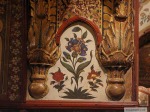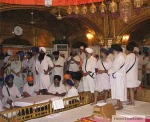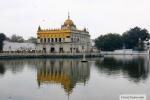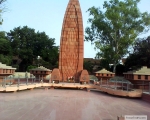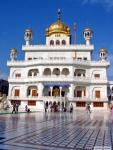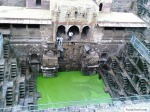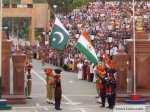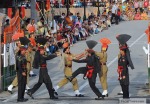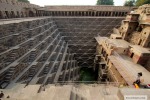Monthly Archives: July 2013
Tourist Places in Amritsar
Amritsar is a city with a splendid blend of tradition and culture. With important religious centers and historical sites, the city reveals a magnificent past and a promising future. The city is known as the Jewel of Punjab. There are several heritage and religious tourist places in Amritsar. The famous one is Sri Harmandir Sahib. Some of other major attractions are as follows:
Places to See in Amritsar
Popularly accepted to have been laid in 1574, the city of Amritsar is a standout amongst the most voyaged traveler destinations in India because of the being of some religious locales. It truly offers a host touring choices that are acknowledged as a percentage of the best vacation spots in Amritsar.
Despite the fact that there are various Sikh places of worship in and around Amritsar, Golden Temple also known as Sri Harmandir Sahib is the grandest of all tourist destinations in Amritsar. The sanctuary houses the blessed script of the Guru Granth Sahib and draws its name from the gold-laden vault upon a marble base. Inside lies the blessed lake. Do spread your head with a cloth or a scarf before entering the Gurudwara. The picture depicts the night sewa at Sri Harmandir Sahib.
The various tourist attractions in Amritsar are discussed as follows:
In 1919, the British Police fired randomly on a peaceful assembly of people gathered in demand of freedom, which killed hundreds of men, women and children on the spot. The bullet marks on the boundary walls bring alive the agonizing tale of cruelty of colonial rule.
This temple Sri Harmandir Sahib is committed to the Hindu goddess Durga. Then again, it additionally offers petitions to God to divinities of Lakshmi and Narayana.
Actually demarcating the Indo-Pakistan outskirt, Wagah is only 28 km from the fundamental town of Amritsar. The ‘change of guards ceremony’ at dusk draws an exceptional numerous onlookers.
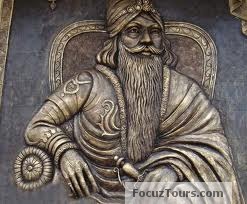 Maharaja Ranjit Singh Panoramio
Maharaja Ranjit Singh Panoramio
Maharaja Ranjit Singh, all the more prevalently reputed to be ‘the Lion of Punjab’ was an incredible child of Punjab as well as around the few heading figures of the history of that period. The deeds of Maharaja Ranjit Singh will stay as lasting checks in the records of sikh history.
Maharaja Ranjit Singh Panorama is a perpetual image based documentation of Maharaja Ranjit Singh and it has been conceptualized and set up by National Council of Science Museums, a self-governing conglomeration of the Ministry of Culture, Government of India. The sprawling 4.5 sections of land of area in the significant Rambagh Heritage Garden at the heart of the blessed city of Amritsar has been made accessible for improving the display by the Government of Punjab, though the whole cost of setting up of the scene has been borne by the Government of India. A tastefully composed tall round and hollow building encompassed with green cultivate close Summer Palace of Maharaja in the Rambagh Heritage Garden is currently a point of interest in the city of Amritsar.
The primary fascination of the landscape is a tremendous 12 meters tall and 100 meters in length surrounding painting portraying six major fight campaigns of the Maharaja. The fight endeavors delineated in the painting are supplemented by expansive round forefront diorama showing various mannequins of noticeable warriors, officers, creatures, weapons etc. A uniquely composed inventive light of the huge painting and the forefront diorama, supported by battle-field sound effects at the background enhance the level of the experience of the viewers.
The Maharaja’s Grand Durbar at Lahore has been reproduced in the scene corridor through a vast three-dimensional dioramic presentation where Maharaja is seen with his bosses, nobles and likewise the poor and destitute. The different points of interest in the vibrant life compass of the Maharaja have been displayed through eight more modest dioramas in the ground floor lobbies. Some other critical tales connected with Maharaja, which have deified him, are additionally displayed in the scene building through wall paintings, portrays and canvas sketches. The intelligent touch screen media booths set in the scene furnish definite informative data of the subject to the guests.

